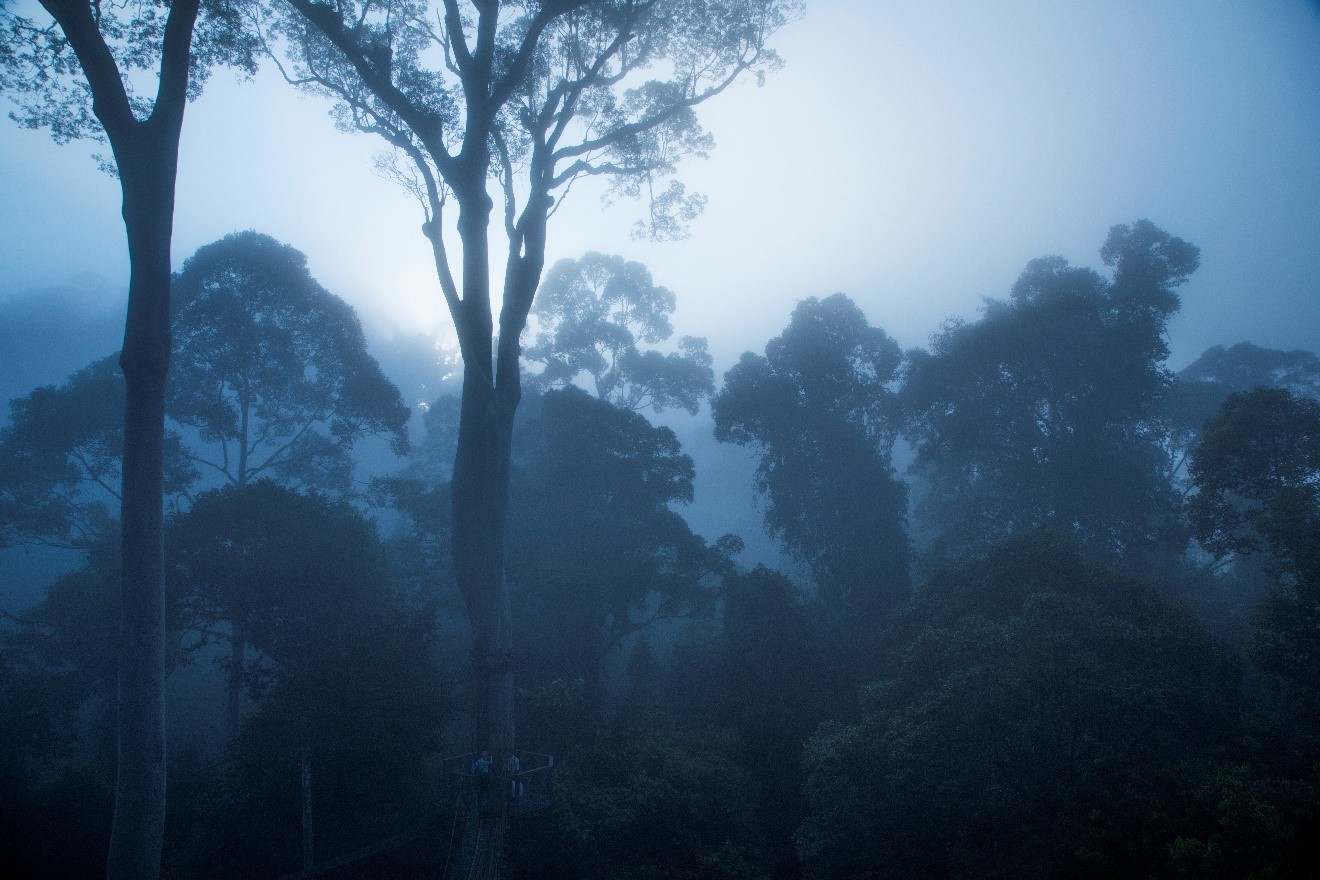
How to get this shot – Tropical Dawn
I love dawn in the tropics. There is something so mysterious, so enigmatic, and so etherial about the expanse of a tropical jungle like the Amazon, Costa Rica, or even Borneo at daybreak.
But dawn happens very fast in the tropics. The closer you are to the equator, the faster the sunrise happens. Thus, this magic moment when the forest is on the brink of emerging from night doesn’t last long. Follow these simple tips to make sure you capture this special moment no matter where in the world you are!

The first and obvious step here is that you need to get yourself to a place where such a scene exists. While you stand a chance in any tropical wilderness, I’ve found that the most pristine tropical wildernesses are best due to the layering effect you have between the big, tall emergent trees and the mid story trees. I gravitate to places like Costa Rica’s cloudforest, the Amazon River, and Borneo’s Danum Valley as some of the best examples. However, any old growth tropical forest has this potential.
Next, you’ll want to be sure you’re staying in a jungle lodge that’s extremely scenic such that you can virtually walk out the door of your jungle lodge and be immersed in a scene like this. Again, location is very important, so be sure to choose remoteness at all costs.
As I said earlier, one of the really key ingredients to this photo is the layering we see. There are some well-defined trees, but there seems to be a sea of forest behind those in front. This layering provides that mysterious look we’re striving for.
The other reason I keep on harping on wilderness and pristine jungle is because typically the more vegetation you have, the more transpiration happens overnight from the plants to produce that morning fog. Obviously there is so much more to it that has to do with elevation, temperature, and a mix of factors we couldn’t begin to perfectly calculate. However, as you’ll see when you mix that fog with layers of trees, you get an amazing layering effect that looks like something from a sci-fi movie.
And by positioning yourself to be photographing into the rising sun, you get those amazing shadows at the bottom, gradually unveiling the forest canopy as you go from bottom to top in the photo.
Let’s talk about camera settings and technique…
I’ll be honest, 70% of the work to get this photo is in finding the right scene. Taking the photo is relatively straightforward. However, with the 30% of work left to do, if you don’t consider these settings or follow these techniques, you may not get the shot at all.
There are two key parts to this step–focusing and metering. That is, what do you focus on, and how do you ensure you’re getting the right lighting?
As you can see, this photo is somewhat backlit, because the rising sun is behind the distant trees. This is good, because it helps create that mystique and that gradient of light. However, it also means that it’s difficult to achieve auto-focus and lighting can be very skewed.
So, let’s start with focus. To me, it’s a no brainer that you must focus on the closest trees, as those are the most defined. If they’re blurry, the shot will be off. But more importantly, it’s easier for the camera to focus on these trees because they are the closest. Camera auto-focus relies on contrast, so picking out an area that has the dark tree silhouetted by bright sky may be your best best.
But then what do you do about metering? Usually your focus and metering is paired such that wherever you focus is the same area your camera uses for metering.
You have a couple choices here…
First, you can stick with the paired focus and metering strategy and use your exposure compensation tool in your camera to lighten or darken after taking a test shot. Most of the time I will begin with this technique…focus easily, take a test shot, review, and then lighten or darken.

However, there is another way, which you may recall from some of my sunrise and sunset photography tutorials. If you use your auto-exposure lock feature (check your camera’s manual for exactly where this is located, as it differs quite a bit between makes and models) and pick out an area that has a lot of mid-tones. That is, something that isn’t super bright nor entrenched in the shadows.
In this photo, it might be in the dead middle of the frame where that distant tree is shrouded in mist and appears evenly gray.

By hitting auto-exposure lock, your camera locks metering for that area, allowing you to use your auto-focus for a different area.
This can be quite helpful, but again, if this is too tricky, stick with the first option and use your exposure compensation.
Pro Tip: experiment with both lightening and darkening…sometimes the best photo isn’t what you intuitively think it should look like the first time.
A final step I’ll recommend, which I also tout as a critical strategy for sunrise, sunset, blue hour, and golden hour photos…set your white balance. In this shot, I wanted to portray the steely blue hue to the sky, so I set my camera on a daylight white balance, which injects more blue into the scene. If I wanted to show off the golden color once the sun popped through, I might have switched it to cloudy to emphasize the yellows.
There is no right and wrong here–you have choices. But be sure to exercise that choice.
One last comment, is that in uniform scenes like this, you may wish to pick out a few dominant trees to act as a foreground element or to help frame your shot like I’ve done here. But this isn’t absolutely necessary…I’ve taken equally compelling photos that don’t have a “subject” and are instead just a uniform pattern amidst the layers of trees and fog.
So there you go! You now know what you need to do to charge out into the jungles of the world and capture a unique view of their pre-day beauty. If you have any tips on photographing the tropics at dawn, be sure to leave us a comment!
And be sure to check out my tips on photographing in the tropics where the foliage is extra dense!
Best,

Court
Leave a reply